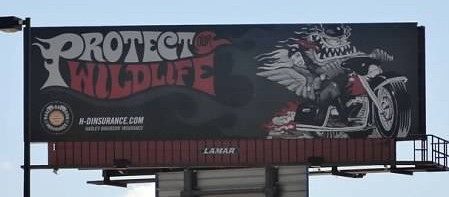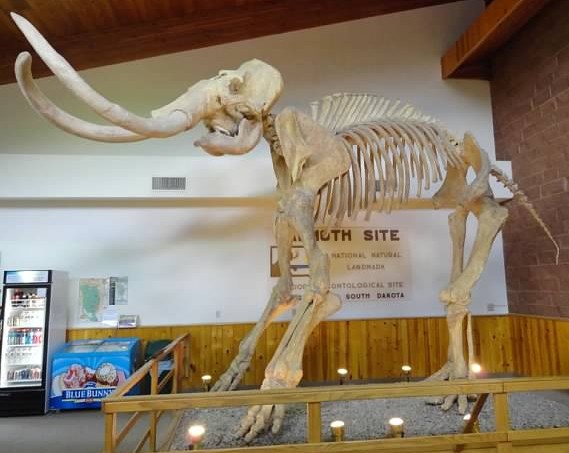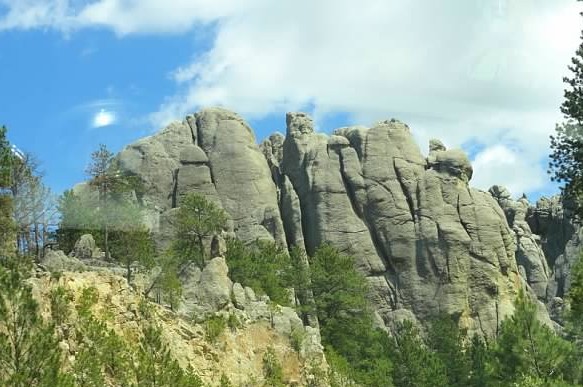Seriously! Bears look cute and fuzzy and have those padded little (gigantic) feet! They look cuddly - and we have those Teddy Bears (remember, as discussed in my blog about Mt. Rushmore December 11, 2012 - they are named after Theodore "Teddy" Roosevelt). You might think it's crazy (because it IS!) but there has been history of people getting out of the car to stand beside bears on the side of the road for a picture. TERRIBLE IDEA!
DO NOT DO THAT!!!
DO NOT DO THAT!!!
When we were in Yellowstone last time, there was a grizzly running along the road, and a bunch of tourists outside of their cars, setting up tri-pods, to get pictures! (The ambulance was parked, running, with its lights on...just in case.) STUPID!
 I guess there are some who think maybe these bears, when babies, would make good pets or something, and then find out that when they grow up, that they are dangerous! and expensive! and they end up being mistreated, malnourished, and crammed into little cages. What is WRONG WITH PEOPLE!!?????
I guess there are some who think maybe these bears, when babies, would make good pets or something, and then find out that when they grow up, that they are dangerous! and expensive! and they end up being mistreated, malnourished, and crammed into little cages. What is WRONG WITH PEOPLE!!?????Enter Casey Anderson - the Grizzly Bear rescuer!
These bears have all been born in (often inhumane) captivity. At the Grizzly Bear Encounters site, they have a cage that is the size of one of the cages. So sad. Heartbreakingly sad. BUT these have been rescued! And they live in a beautiful habitat that Casey built for the care of the Grizzlies, and education of the people ~ Montana Grizzly Encounters, just outside of Bozeman, Montana.
Currently, there are 5 Grizzlies in the enclosure - and a schedule regulating who's out in the public eye at which time. (Apparently, they aren't all pals... but apparently...some of them are!)
Brutus the Bear is Casey's best friend, from all I've read. Brutus even stood up for Casey as his "best man" at his wedding AND he's had dinner, at the table, with the rest of the family!! (The best pictures are shown in the interview with National Geographic - in my opinion - http://channel.nationalgeographic.com/channel/content/expedition-grizzly-3909/brutus-and-me/album-01.html and you absolutely have to go look at them!!!! More (and some of the same) can be seen at http://www.dailymail.co.uk/news/article-1174259/Meet-Brutus-800lb-grizzly-bear-likes-eat-meals-dinner-table.html)
 Casey rescued Brutus when he was just a tiny little baby and they have been together ever since. Brutus was the size of a squirrel at the time, and now weighs about 800 pounds (363 kgs) and is almost 8 feet tall (2.36 meters). (Brutus had a sibling that didn't make it...)
Casey rescued Brutus when he was just a tiny little baby and they have been together ever since. Brutus was the size of a squirrel at the time, and now weighs about 800 pounds (363 kgs) and is almost 8 feet tall (2.36 meters). (Brutus had a sibling that didn't make it...)
Brutus is the "spokesperson" for Grizzly bears and has been featured (as I mentioned) in National Geographic, has appeared on the Oprah Show, and has had parts in education videos and two movies.
Two of the other bears are Sheena and Christi - they are twins and spent 15 years in a 6 foot by 4 foot cage. Reading this makes me cry. I can't talk about it. They were 18 years old when they were adopted by Montana Grizzly Encounters and had to learn how to live in a "real" world, with space. They finally get to LIVE! live in a habitat for bears! Yes. I was right.
I can't talk about it.
 Another pair are Jake and Maggi. I don't know anything about them. (There was information given about them when we were there visiting, but I don't remember. I'm sorry.) They weren't outside when we were there - and, I only had previously known about Brutus, and the website describing each bear is being updated with their details. But, clearly, Jake & Maggi are compatible, or they wouldn't be allowed out at the same time.
Another pair are Jake and Maggi. I don't know anything about them. (There was information given about them when we were there visiting, but I don't remember. I'm sorry.) They weren't outside when we were there - and, I only had previously known about Brutus, and the website describing each bear is being updated with their details. But, clearly, Jake & Maggi are compatible, or they wouldn't be allowed out at the same time.
Finally, there's Lucy. Lucy was out when we were there, and she is the youngest and the newest. When we were there, she was still acclimatizing to her surroundings.
 Montana Grizzly Encounter's Facebook page (https://www.facebook.com/pages/Montana-Grizzly-Encounter/208277108152) has a video of Lucy, right after her arrival - and SHE IS SO CUTE!!!!! (It's posted on their page December 11, 2012.) SO CUTE!! GO LOOK!!!
Montana Grizzly Encounter's Facebook page (https://www.facebook.com/pages/Montana-Grizzly-Encounter/208277108152) has a video of Lucy, right after her arrival - and SHE IS SO CUTE!!!!! (It's posted on their page December 11, 2012.) SO CUTE!! GO LOOK!!!
All of my pictures are of Lucy, except the picture I borrowed of Casey and Brutus, the baby bear.
Please! Take time to look at all Montana Grizzly Encounters has done! Take time to Google and find other articles and more pictures. http://grizzlyencounter.org/
Wednesday, we will be continuing on to Virginia City, Montana.









































 On May 5, 1877, he (along with Little Big Man and others) met with First Lieutenant W.P. Clark to take their first steps toward surrender. Crazy Horse went to live at the Red Cloud Agency, near Fort Robinson.
On May 5, 1877, he (along with Little Big Man and others) met with First Lieutenant W.P. Clark to take their first steps toward surrender. Crazy Horse went to live at the Red Cloud Agency, near Fort Robinson. 